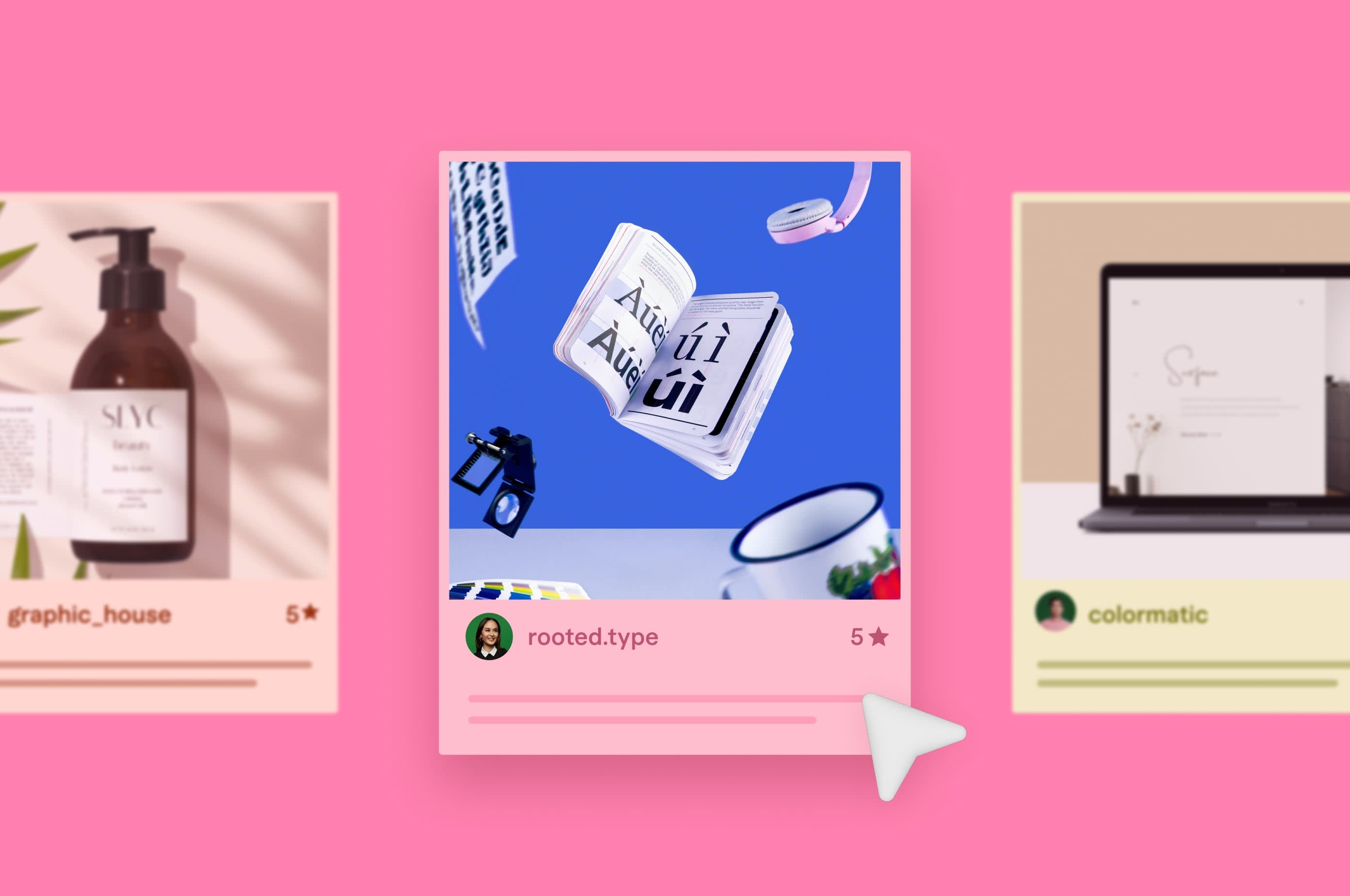6 Tips to Craft an E-commerce Logo Design That Attracts Customers
Creating an e-commerce logo can feel like a challenging task because you don’t know where to start. Here’s a guide to help you navigate the process of crafting a logo that captures your brand’s personality.
 June 7, 2023
June 7, 2023 13 minute reading
13 minute reading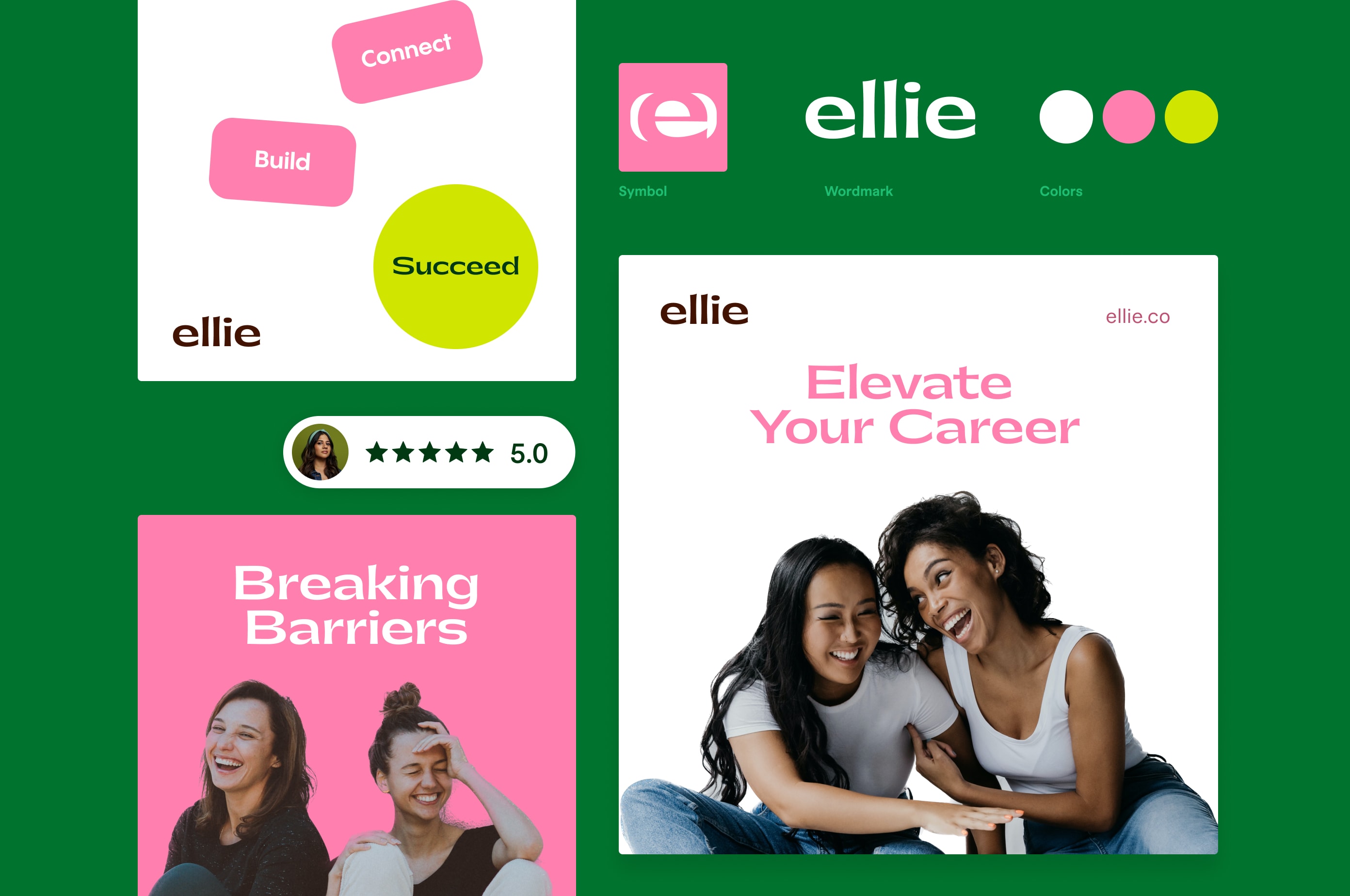
Ecommerce is a highly competitive space. And as a business owner, you know that standing out in a sea of competing players is a challenge. According toPipeCandy, there are 5.4 million ecommerce stores in the United States alone. In such a saturated market, becoming the next go-toecommerce brandfor a specific niche is getting more challenging by the day.
But there’s one thing that can help you differentiate yourself: anecommerce logo. Your logo acts as a part of your brand’s identity, conveying your mission and values in a single image.
Think about Amazon’s logo. It’s a simple text logo that shows a curved arrow that runs from A to Z in “Amazon”—indicating the breadth of products available. It’s easy to remember and shows the company’s product capabilities.

Source: Wikimedia Commons
This is why you need a well-designed logo, too—it creates a strong impression and establishes your brand’s presence. To help you navigate this process, we’ll discuss the elements of a logo that stands out, things you need to consider, tips to create an effective logo, and what to include in a design brief.
Tenets of an ecommerce logo that stands out
When your customers look at your logo, it should invoke a specific feeling—one that’s in line with your brand values and mission. But if we had to boil it down to specific principles, that would include the following:
Shows your brand’s personality
考虑你想要的情绪唤起你的助教rget audience. Are you aiming for a playful, energetic vibe or a more sophisticated and professional demeanor? The choice of visual elements like color, typography, and icons contribute to the overall feel of the product.
For instance, Chewy’s logo is more playful because it caters to pet parents looking for various food options for their companions.
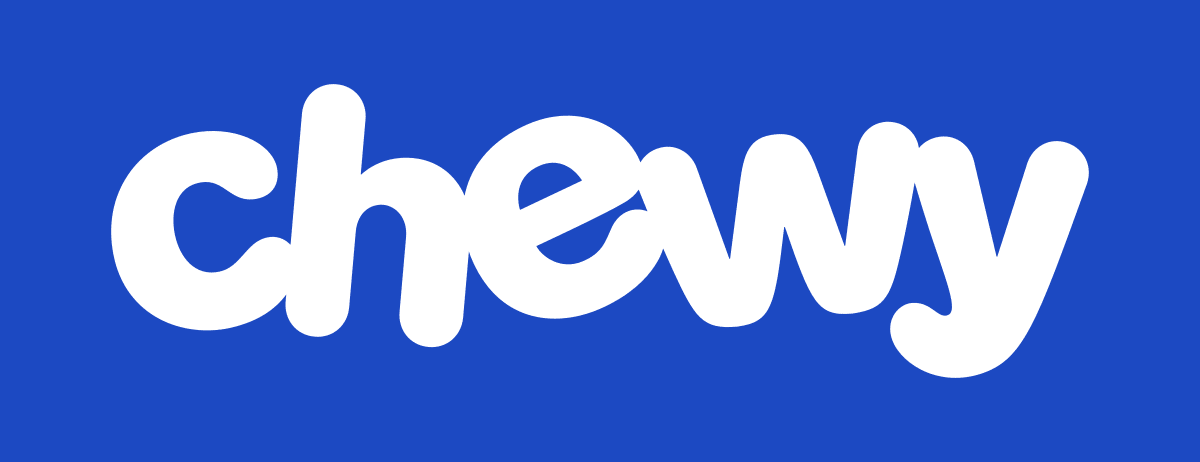
Source:Wikipedia
On the other hand, Dermalogica’s Pro ecommerce website caters to dermatologists, indicating the need for a more sophisticated design.

Source:Dermalogica
Ensuring your logo aligns with your brand’s identity lets you create a strong and consistent visual representation that resonates with your audience.
Simple to understand and remember
With so many players in the market, you need something that’s simple to understand and memorable in the long run.
Joao Pereira, a branding designer on Fiverr and art director atUltrabold, says simplicity and flexibility are key parts of logo design.
For instance, the grocery cart in the Kroger logo directly communicates this is a business that offers groceries. So, avoid a cluttered logo that hinders brand recall. Keep it clean, simple, and memorable.

Source: Kroger
Communicates your brand value
Any logo that communicates what a brand does and its core mission, does its job well. Logos are a significant part of your branding exercise, which means they need to encapsulate the essence of your brand in one image.
Bryan Clayton, the CEO and co-founder ofGreenPal, emphasizes the importance of following this approach. “Our logo at GreenPal is a green leaf and fast-looking letters that represent our mission to make lawn care easy, affordable, and eco-friendly for homeowners,” says Clayton. “It also conveys a sense of happiness and satisfaction that we want our customers to feel when they use our platform.”
So, create a logo that serves as a visual representation of your brand’s value and unique proposition.
Core elements of an ecommerce logo
Before you start building an ecommerce logo or investing in building one, you need to know what constitutes a unique logo:
Style
Ideally, the style of your logo should align with your brand’s overall identity and target audience. It should enhance the visual appeal of your brand and be distinct enough to enable brand recall.
“A logo isn’t just a design, it’s a powerful symbol that stands for your brand’s identity. It should harmoniously blend with the industry you’re a part of and resonate with your target audience,” says Zach Dannett, co-founder atTumble. “Its primary role is to encapsulate your brand’s essence in a way that instantly connects with the people you’re aiming to engage.”
There are several styles you can adopt, including:
Minimalist
Vintage
Modern
Mascots
Emblems
Abstract
Hand drawn
Cartoon
3D
Lettering
Geometrics
Signature
Watercolor
Animation
“It’s more than just a visual element, it’s a storyteller. It communicates your brand identity and aligns with your core values and brand essence, making it not just relevant, but indispensable,” says Dannett. So, choose one that tells your story.
Symbols
Symbols act as a communication channel—conveying meaning that sometimes words can’t. A2020 paperfound that, since symbols multiply the effect of words, the risk of saying something wrong can be increased if you use the wrong symbol.
Choose a symbol that speaks to your ecommerce business. For instance, if you’re selling photography products, using a camera symbol or a tripod would make sense. On the other hand, for a botanical business, use a tree or shrub, like this one created byRebeka Mira Nagy, a design freelancer on Fiverr:
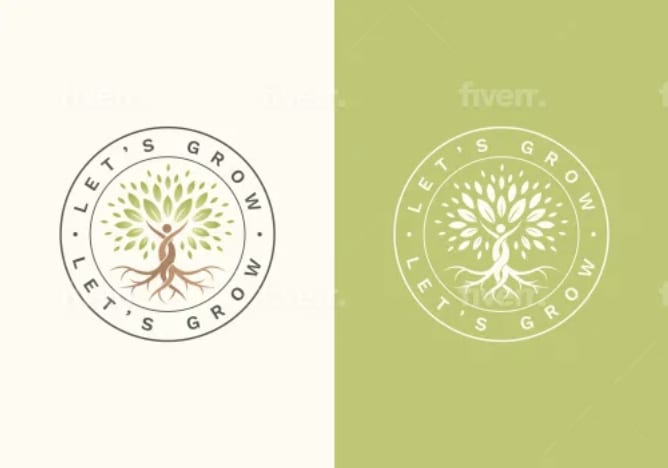
Source:@miragrande
Choose symbols carefully to ensure they are relevant, simple, and easily recognizable—an undefined or complex symbol can confuse or alienate potential customers.
Colors
Many studies have researched theimpact of colorson thehuman psyche. Each color has its own connotation and evokes very specific emotions. For example, the color blue evokes a feeling of trust, loyalty, and competence. That’s one reason40% of Fortune 500 companieshave a blue logo.
But the color yellow brings in a feeling of warmth and happiness, and orange instills confidence and a sense of success. That’s whyLéa Denis, a freelancegraphic designerand illustrator on Fiverr, chose these colors for Tabletop, a board game store.

Source:@sudio_lamiette
Sochoose a color palettethat stands out and resonates with your target audience. Limiting thenumber of colorsyou use is also best to avoid creating a confusing brand image. Here’s a guide that can help you choose your brand colors:
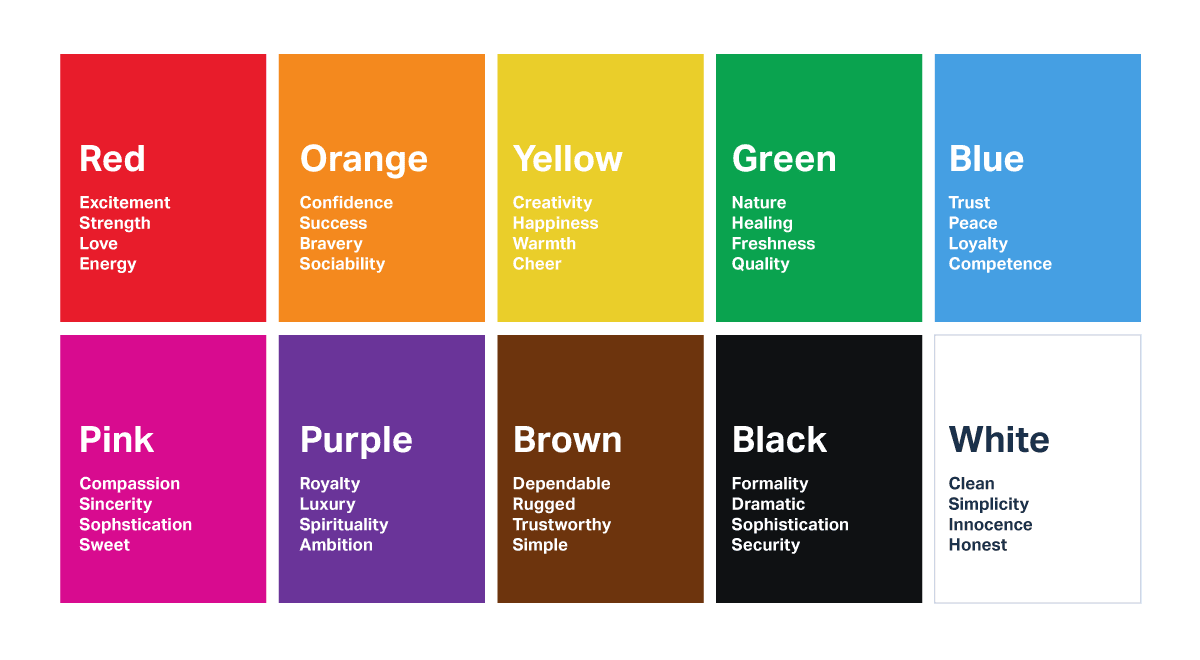
Source:UserTesting
Font
Thechoice of fontplays a huge role in your brand’s impact. It needs to be legible, no matter how much it’s scaled down, and should reflect your brand’s personality. Think of it this way: If your brand exudes elegance and luxury, you don’t want to use the Comic Sans font in your logo. Instead, you’d want to use something like Caveat or Lora.
Additionally, the font should be harmonious with other visual elements in the logo and maintain consistency with your brand’s overall visual identity.
For example, take a look at whatFoundry Designs, a design studio on Fiverr, created for skincare brand Babusso. Because Babusso’s brand leans on the playful side of things and caters to a young female audience, it chose a font that highlights the use of organic ingredients in its product.
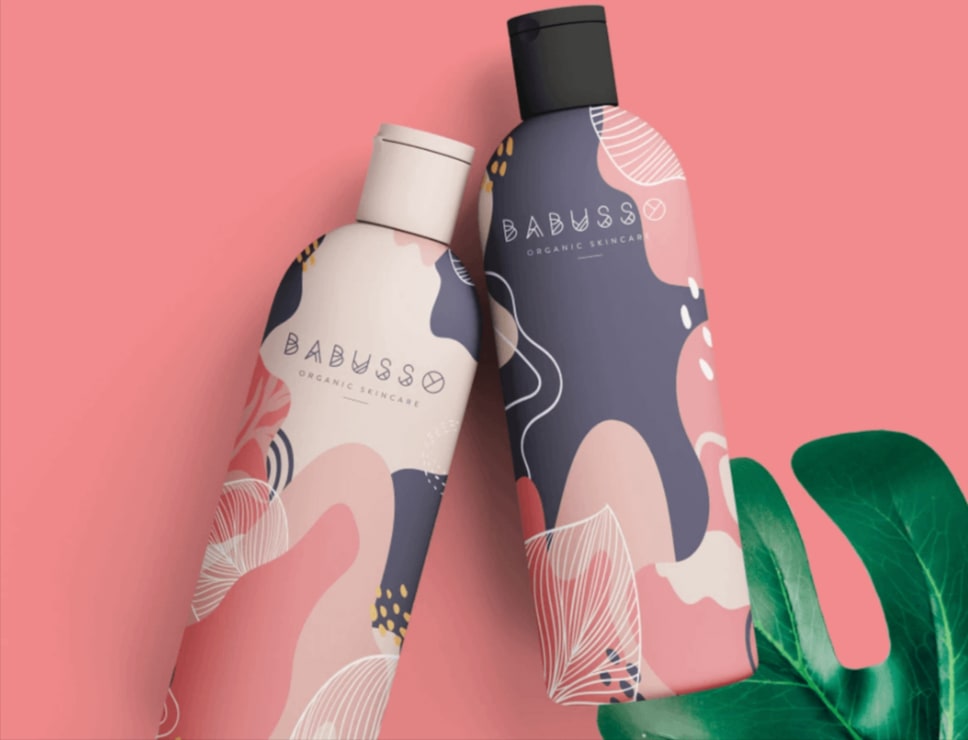
Source:Fiverr
Words
Including words like a brand name or tagline can provide additional clarity and context to a logo. Usually, brands that are just starting out include their name.
Ensure the typography is legible, aligned with the brand’s style, and works well with other visual elements. Too much text, lack of adequate spacing, or overly complex typography overwhelms the logo and makes it difficult to read.
Find an e-commerce logo designer on Fiverr
Types of ecommerce logos to consider before building one
You can createvarious kinds of logos, using either graphics or text, or both. Let’s look at all three:
Text-based logos
Text-based logos, also known as wordmark logos, include the full name of a brand or a shorter but memorable abbreviation of its full name. These logos work well when the company has a distinct and succinct name. In the ecommerce space, you can think of companies like IKEA, Hepper, and eBay.
Text-based logos create strong brand recognition, and when paired with an appropriate font and brand colors, also create a distinct feel. For example, IKEA’s logo includes a heavier font with blue and yellow colors, signifying a sense of security and homeliness.
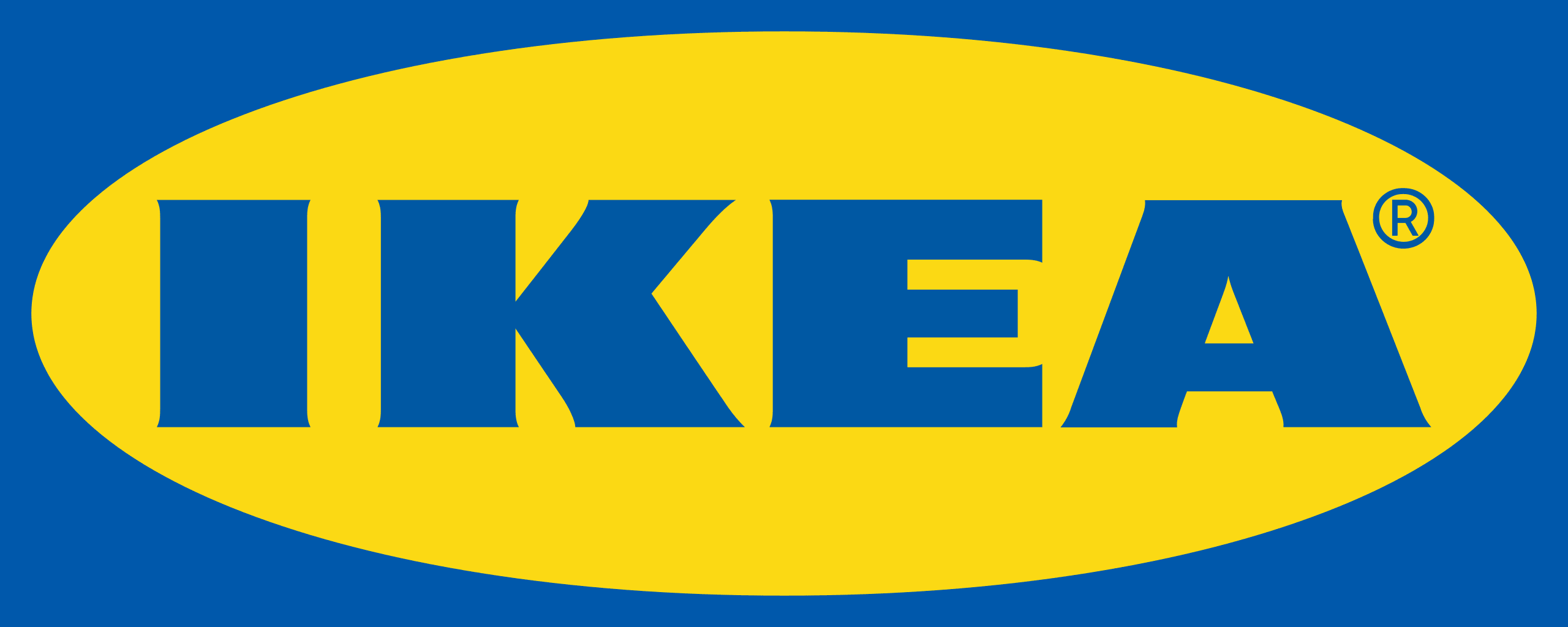
Source: Wikimedia Commons
Graphic-based logos
A graphic-based logo, also known as a pictorial mark or brand mark logo, includes a representative symbol of the brand. The idea is that the symbol communicates what the brand does or stands for.
For instance, Shopify has a distinct green logo and uses the letter S to signify the brand. Plus, the graphic has a picture of a shopping bag, indicating its presence in theecommerce space. Remember that this works for brands that already have brand recognition in place. It’s best to create one with a graphic and text so that you can use just the image for branding in the future.

Source:Logos and Types
Graphic and text combined
This is one of the most common types of logos, given that it communicates both what the brand does and what it’s called. It’s also known as the combination mark and is a versatile choice for ecommerce owners just starting out.
In the image below, you can see how Maharani, a luxury ethnic wear brand from India, uses the crown as a symbol, as its fitting for queens only. The Hindi word for queen is “maharani,” which ties in nicely with the logo.
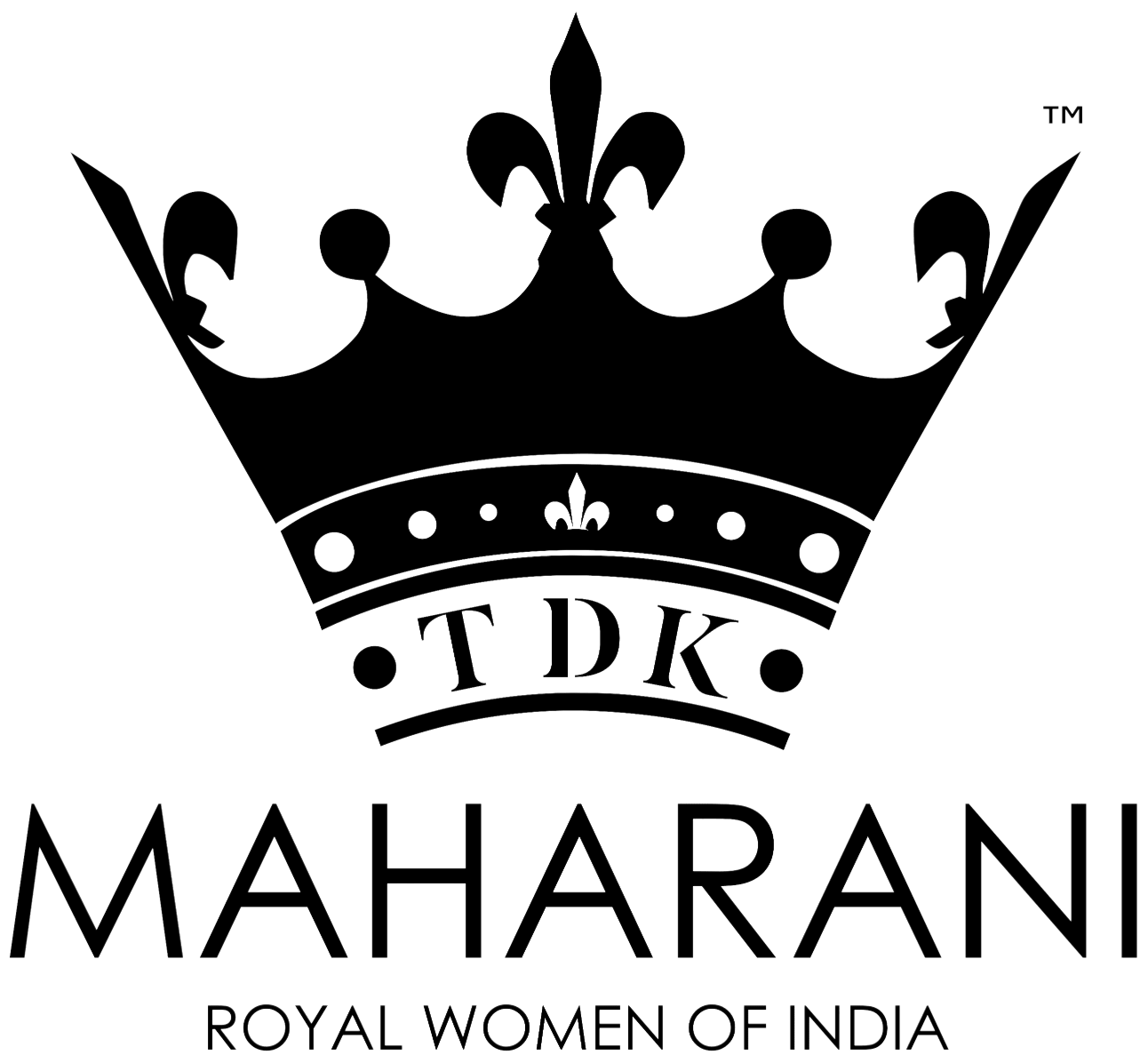
Source:Maharani Women
6 tips for creating an effective ecommerce logo
Here are six tips from the experts that allow you to create a logo that talks to your target audience:
1. Make sure the logo is relevant to your brand and niche
首先了解what your brand stands for and which niche you’re playing in. For example, integrating nature-inspired symbols or green colors can reinforce your brand’s values if you specialize in eco-friendly products. But if you’re selling outdoor equipment, use a brown palette and symbols representing the outdoors, like wood, mountains, etc.
Here’s an example from our freelance talent pool on Fiverr.Evelina Rosinskarecently created a brand identity kit for an online luxury makeup brand called Bunny Rouge.
Keeping it true to the name, she used a symbol of a running rabbit and paired it with a red rouge palette.
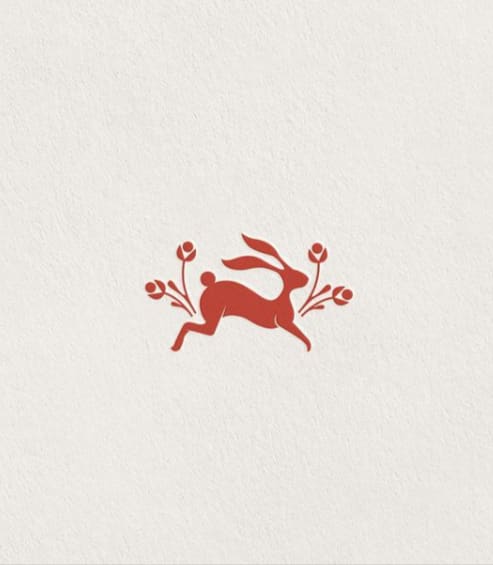
Source:Instagram
它符合品牌的女性观众和the luxury feel it’s looking to express. Here's an example of a branded box she designed for the brand, too.
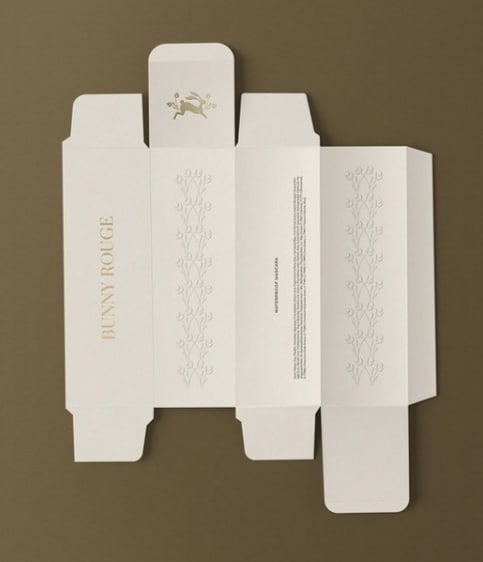
Source:Instagram
2. Understand your target market and audience
Research your target market by looking into demographics, preferences, and aspirations. What appeals to them visually? What kind of imagery, colors, or typography resonates with them? It’s a chance to make a first impression—so aim to create one that sticks.
“When we created our logo for GreenPal, we did a lot of research on the lawn care industry, our potential customers, and our competitors,” says CEO Bryan Clayton. “We wanted to create a logo that would appeal to homeowners who value convenience, quality, and sustainability. But also, one that would attract lawn care professionals who are looking for more customers and flexibility.”
3. Prioritize your brand’s impact over personal preference
很容易与团队成员坐在会议室from other departments and fuss over a logo’s font or size. But if the logo doesn’t create the impact you want it to create, you’re wasting time.
The main goal of the logo is to solidify your presence in a crowded market—and tell your story. Set aside personal biases and evaluate if the logo achieves those goals. While the typography might not be to your liking, your job is done if it creates the right impression on your target audience.
Hire a logo designer for your ecommerce brand
4. Ensure it’s horizontal and mobile friendly
Ideally, your logo should fit any channel you publish in, whether it’s your brand website, social media posts, or other creatives. When your logo is in a horizontal orientation, it’s easier to place, ensuring it’s adaptable across different devices and platforms.
另外,当you scale it down, you can still see what the logo says, which might not always be the case with a square logo. It provides better visibility and maximizes screen real estate.
5. Have an initial idea or concept in mind before hiring designers
Creating a brand logo is a massive investment in terms of money and time. You don’t want to randomly hire a designer without knowing what you want. So do some initial research and provide those concepts to your designer.
Alternatively, work with a designer with a structured process to create an ecommerce logo that aligns with your vision. For instance, designer Evelina Rosinska recommends indulging in a collaborative process instead of a one-sided one.
“It’s not easy to represent the values that we express through words in an abstract form of graphic design, or the shapes of the letters,” says Rosinska. “Before I create any design, I like to take an extra step where we collaborate closely to bridge the gap between words and design by creating and discussing mood boards and different design styles. We discuss images so I can understand how my clients think visually and what certain shapes, colors, styles they prefer in the context of their ideal customer and brand vision.”
PRO TIP:Create an initial mockup usingFiverr’s ecommerce logo makerto communicate your idea.
6. Get customer feedback before making it official
At any stage of the process, gathering customer feedback is crucial, because, ultimately, they’re the ones you want to attract to your business. Conduct surveys or focus groups to collect opinions and insights from your target audience. Hone in on how they perceive your logo, what doesn’t sit well with them, and how memorable it is.
For instance, Myntra, an Indian ecommerce fashion brand,faced a huge backlashfrom its customers in 2021 when it changed its logo. An NGO activist even filed a police complaint, saying the image was offensive to women. Eventually, the brand had to alter its new logo.

The original logo that Myntra launched in 2021. |Source

The reworked logo after the police complaint was filed.|Source
Clayton also recommends testing a logo with different groups of people to see how they react. His team chose a green leaf with a smiley face to symbolize their core value of making lawn care easy. Additionally, the friendly and modern font matched the brand’s personality. Only once focus groups provided positive feedback was the logo rolled out officially.

Source:Your Green Pal
Create your ecommerce logo with Fiverr’s freelance talent pool
Creating a compelling ecommerce logo is crucial, as it positions you as the go-to brand for the specific products you offer. It’s your brand’s visual identity—and helps you stand out from a sea of competitors.
This is why you need to understand what it consists of, the different variations you can create, and what kind of positioning you need to aim for. All of this boils down to how well you know your niche, your target audience, and your audience’s perceptions.
To do this successfully, we recommend hiring afreelance graphic designerwith experience creating logos for various brands in your niche. They do the heavy lifting for you by quickly taking your idea from a mere thought to an executed brand identity andlogo design. These designers invest time learning the latest e-commerce trends and crafting logos that match expectations.
Plus, you can manage them directly within the same platform without worrying about project management. It ensures you work with designers who know your market inside out and can deliver a logo that demarcates your brand from everybody else.
Another great option to consider, especially for those facing time or budget limitations, is to adopt a do-it-yourself approach using alogo maker tool. Ultimately, working with a logo maker tool that harnesses the unique work of top designers provides the most flexibility.
The suggested designs within Fiverr Logo Maker are already based on the beautiful work of Fiverr’s top freelance designers and are further tailored to match individual requirements using the capabilities of AI.
Ready to create your your outstanding e-commerce logo? Hire afreelance logo designer expertor try theLogo Makertoday to discover the most ideal logo for your brand.


